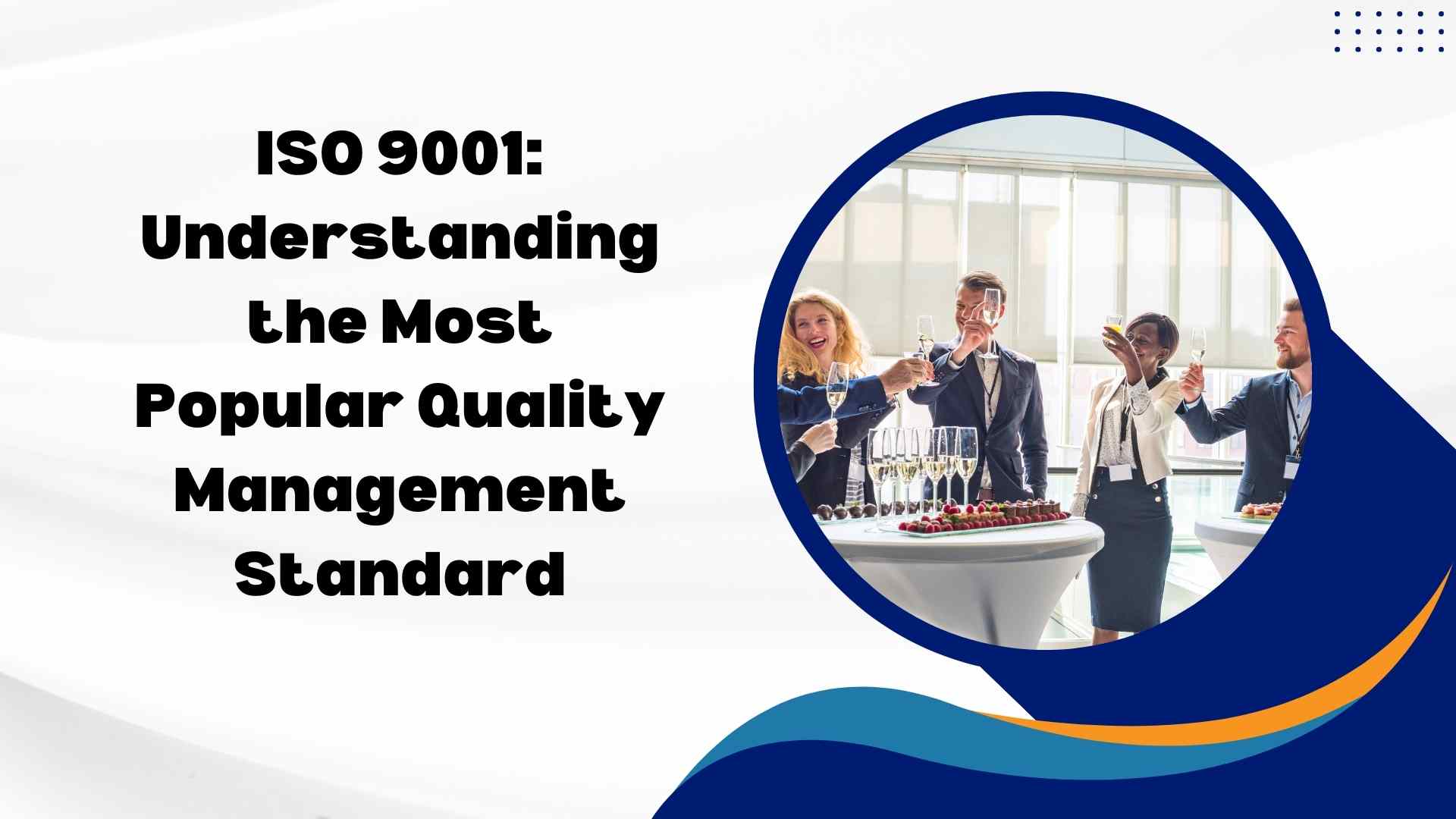ISO 9001 Certification is one of the most widely recognized and implemented quality management standards in the world. It is part of the ISO 9000 family, which focuses on quality management systems (QMS) that organizations can use to ensure they meet the needs of customers and other stakeholders. This standard is not specific to any industry and can be applied to organizations of any size, from small businesses to large corporations.
What is ISO 9001?
ISO 9001 sets out the criteria for a quality management system. It is based on several quality management principles, including a strong customer focus, the involvement of top management, the process approach, and continual improvement. The standard is designed to help organizations ensure that they consistently meet customer and regulatory requirements and improve customer satisfaction.
The latest version of the standard, ISO 9001:2015, was released in September 2015. This version brought a more significant focus on risk-based thinking and aligned the standard with other management system standards like ISO 14001, making it easier for organizations to integrate multiple standards.
The Key Principles of ISO 9001
ISO 9001 is built on seven quality management principles that guide organizations in establishing an effective quality management system:
- Customer Focus: Understanding and meeting the needs of customers is a central aspect of ISO 9001. Organizations should strive to exceed customer expectations, which can lead to higher customer satisfaction, loyalty, and business success.
- Leadership: Strong leadership is essential for establishing a clear direction for the organization. Leaders at all levels should be committed to the quality management system and ensure that it is aligned with the organization’s goals.
- Engagement of People: Employees at all levels are important to an organization’s success. Engaging and empowering employees can lead to more innovative solutions and better performance.
- Process Approach: ISO 9001 emphasizes managing activities as processes, which involves understanding how different processes interrelate and contribute to the organization’s overall objectives.
- Improvement: Continual improvement is a key objective of ISO 9001. Organizations should always seek ways to improve their processes, products, and services.
- Evidence-Based Decision Making: Decisions should be based on the analysis of data and information. This approach ensures that decisions are well-informed and lead to better outcomes.
- Relationship Management: Managing relationships with interested parties, such as suppliers and partners, is essential for sustained success. Good relationship management helps ensure a consistent supply of goods and services and can lead to mutual benefits.
The Structure of ISO 9001:2015
ISO 9001:2015 follows a structure known as Annex SL, which is common to all ISO management system standards. This structure makes it easier for organizations to implement multiple management systems, such as those for environmental management (ISO 14001) or occupational health and safety (ISO 45001).
The structure of ISO 9001:2015 is as follows:
- Scope: This section defines the boundaries and applicability of the quality management system.
- Normative References: These are the essential standards and references that support the application of ISO 9001.
- Terms and Definitions: This section provides the specific terms and definitions used in the standard.
- Context of the Organization: Organizations must understand their context, including the needs and expectations of interested parties, to develop an effective QMS.
- Leadership: Top management must demonstrate leadership and commitment to the QMS. This includes defining a quality policy, setting objectives, and assigning roles and responsibilities.
- Planning: This section covers risk-based thinking, where organizations must identify and address risks and opportunities that can impact the QMS.
- Support: This includes the resources needed to implement the QMS, such as human resources, infrastructure, and documentation.
- 8. Operation: The core processes that deliver products and services must be controlled and monitored to ensure they meet requirements.
- Performance Evaluation: Organizations must monitor, measure, analyze, and evaluate the performance of the QMS.
- 1 Improvement: The focus here is on identifying opportunities for improvement and implementing actions to achieve the desired outcomes.
Benefits of Implementing ISO 9001
Implementing ISO 9001 can bring numerous benefits to an organization:
- Enhanced Customer Satisfaction: By consistently delivering products and services that meet customer requirements, organizations can increase customer satisfaction and loyalty.
- Improved Process Efficiency: ISO 9001 encourages organizations to streamline their processes, reducing waste and improving efficiency.
- Better Risk Management: The standard’s focus on risk-based thinking helps organizations identify potential risks and take steps to mitigate them before they become problems.
- Increased Credibility: Certification to ISO 9001 can enhance an organization’s reputation and credibility in the market. Many customers and partners prefer or require suppliers to be ISO 9001 certified.
- Global Recognition: ISO 9001 is recognized worldwide, making it easier for organizations to do business internationally.
- Continual Improvement: The emphasis on continual improvement ensures that organizations are always looking for ways to enhance their processes, products, and services.
- Employee Engagement: Involving employees in the QMS can lead to higher levels of engagement and motivation, as they see how their work contributes to the organization’s goals.
Also Read: How to get ISO 9001 certification
Conclusion
ISO 9001 is a powerful tool for organizations looking to improve their quality management systems and deliver better products and services to their customers. By focusing on customer satisfaction, continual improvement, and risk management, ISO 9001 helps organizations achieve their goals and enhance their reputation in the market. Whether a small business or a large corporation, implementing ISO 9001 can lead to significant benefits and long-term success.

